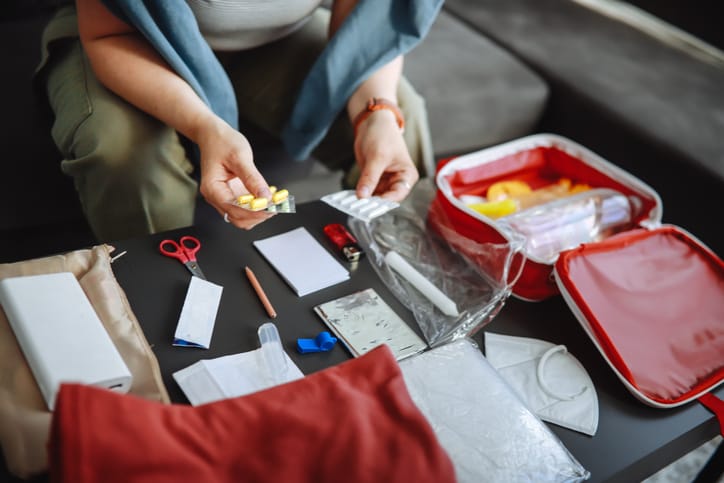The symptom burden of systemic mastocytosis (SM) can vary in severity and duration. Severe episodes can be life-threatening, as in the case of anaphylaxis.
Clinicians recommend having a carefully prepared medical kit on hand for use in unexpected situations, such as the rapid onset of symptoms when you least expect them.
What is SM?
Systemic mastocytosis (SM) is a rare hematological disease characterized by mast cells that are overactive and accumulate in different parts of the body such as the bone marrow, liver, spleen, gastrointestinal tract and lymph nodes.
A medical kit is a must-have for your car, workplace or home, whether you use it to soothe symptom flare-ups or for emergency care if you have a serious allergic reaction.
Managing serious symptom episodes in SM
SM symptoms can be triggered by sudden changes in temperature, insect bites, strong perfumes or pollen, emotional stress, physical exertion, skin friction, certain foods or medication and alcohol.
Read more about SM signs and symptoms
Triggers and resulting symptoms can vary from person to person and can include skin irritation, itching, flushing, hives, nausea, vomiting, stomach pain, muscle or joint pain, mood changes, brain fog or anaphylaxis.
Over time, you’ll become familiar with your patterns and will learn to avoid triggers and the onset of symptoms through medication, diet and lifestyle modifications.
But you may find yourself caught off guard by a symptom episode that you didn’t anticipate or that has a heavier effect than usual. Having a fully stocked medical kit at your disposal will ease your pain and discomfort and could even save your life.
What to keep in your medical kit
Choose a container such as a lunch bag or box that you can easily open and access. Check it regularly to make sure the contents have not expired. Keep the following items in your kit.
- Emergency contacts: Contact details for your medical provider, your partner and a family member or friend.
- Medical information: Information on your SM and any other conditions, as well as a list of medications and dosages.
- Epinephrine: Two epinephrine injectable pens and instructions for use in the case of anaphylaxis.
- Medication: Antihistamines to be taken to treat skin irritations and digestive issues and corticosteroids to reduce inflammation in the skin.
- Creams: Hydrating moisturizers or calamine lotion to ease skin irritations such as hives.
- Instant cold pack: A cold pack can soothe skin irritations such as hives and flushing.
- A bottle of water: To take medication and rehydrate.
Sign up here to get the latest news, perspectives, and information about SM sent directly to your inbox. Registration is free and only takes a minute.

